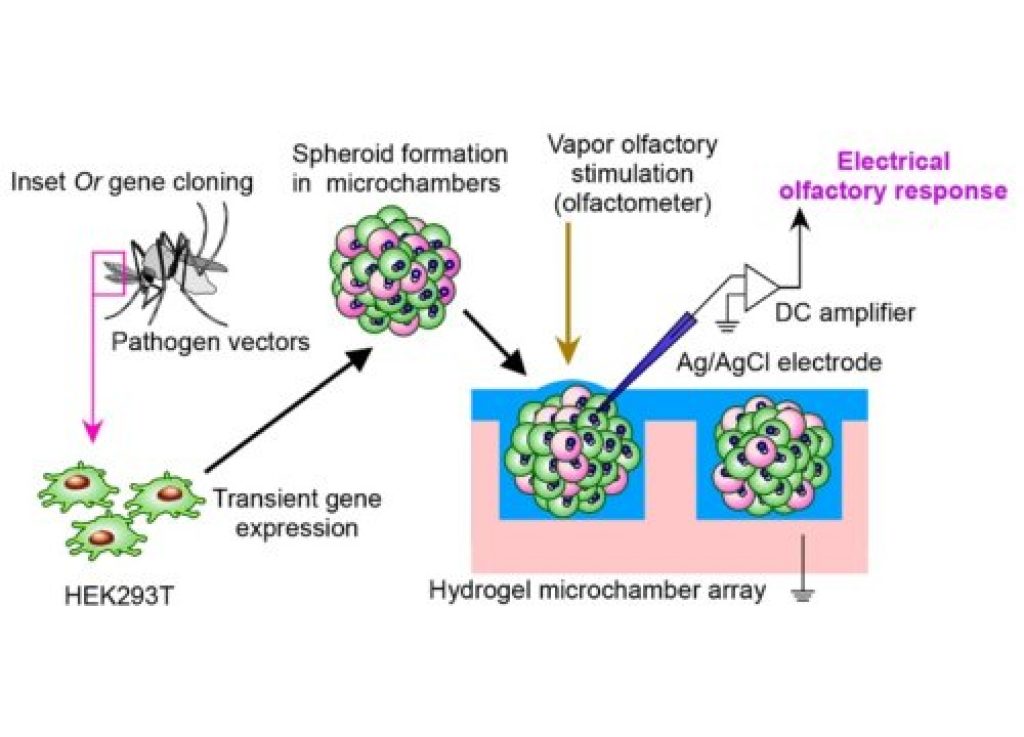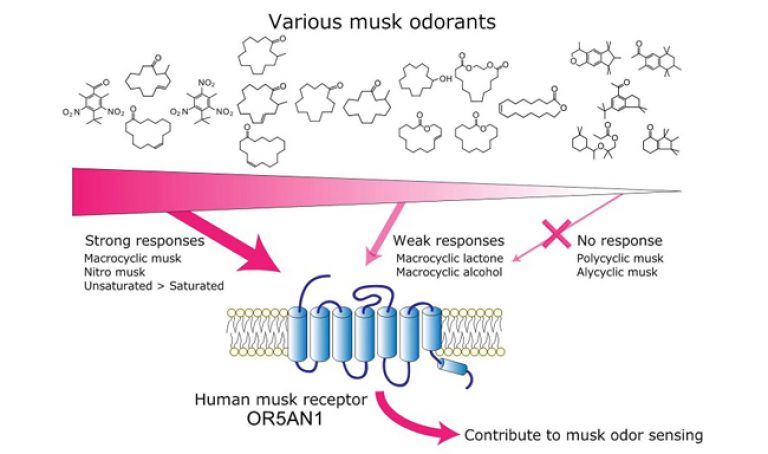
AsianScientist (Aug. 25, 2014) – Scientists have developed an artificial nose, the first system that can measure the responses of odorant receptors (OR) to gaseous compounds. This method could be used to develop protein-based gas sensing techniques, including screens for mosquito repellent compounds.
A decade ago, Linda Buck and Richard Axel were awarded the Nobel Prize for their discovery of OR. They found that animals use intracellular G-protein signaling pathways to transmit the information of odorant chemicals into the electrical neural activities. Since then, scientists have been interested in developing OR-based artificial noses to quantify the chemical responses to different smells as well as to identify new receptors.
However, existing OR-based sensing technologies are only capable of detecting chemicals dissolved in aqueous solutions, whereas our sense of smell detects gaseous compounds. This is because OR proteins do not function properly when they are dried out, they must be placed in an aqueous buffer to maintain their structure. Furthermore, recreating OR sensing is complicated as it requires researchers not only to introduce the OR itself, but also the G-protein and all the downstream proteins.
In 2008, first author of the present study, Dr. Koji Sato from the University of Tokyo, discovered that insects had evolved unique chemosensory receptors: ligand gated ion channels that directly caused cell depolarization upon activation.
“This molecular characteristic meant that insect OR could be studied without the need to reconstitute G-protein subunits, effectors and downstream ion channels, making them particularly suitable for the development of protein-based olfactory sensors,” Dr. Sato told Asian Scientist Magazine.
Armed with this finding, Dr. Sato and corresponding author Professor Shoji Takeuchi set about developing an insect OR-based system that could detect chemical vapors. To do this, they first expressed the insect OR genes in a mammalian cell line, culturing the cells such that they formed small spheres rather than sticking to the cell culture plates. To keep the spheroids moist, they loaded the individual spheres into tiny hydrogel wells carved out by photolitography. Finally, odorants were passed over the spheroids by a gas injection system and the electrical responses of the cells were recorded by a glass electrode inserted into the spheroid.
Using this reconstituted OR system, they were able to show that there are essential differences between in vivo responses to smells and the cell line system, suggesting that compounds in the mucus affect the mechanism of odor recognition.
“Our study is just the beginning of the development of protein-based artificial nose,” said Prof. Takeuchi. “This is the first report of the sensing of ‘vapor’ chemicals by using reconstituted ORs in the mammalian cell line. So far, the function of olfactory mucus was examined by gene-targeted animals. Our system would be applicable to study the function of extracellular components in the olfaction.”
“One immediate application of our system would be to screen for compounds that could be used as mosquito repellents. In the field of the public health, the control of pathogen vector insects—especially mosquitoes—is an important task. The easiest way to prevent insect bites is the use of repellents, which interfere the insect olfactory system.”
Looking forward, Prof. Takeuchi hopes that the tool they have developed will enable further discoveries in the neurobiology of olfaction, particularly in understanding how animals such as mice and dogs have developed such sensitive noses.
“Although development of genetic databases provides a lot of molecular information about their sense of smell, the ultrasensitivity of the animal nose and its reconstitution is still a big biological and technological matter. Improvement of our methodology will help us to understand what is behind the mystery of olfaction,” he said.
The article can be found at: Sato and Takeuchi. (2014) Chemical Vapor Detection Using a Reconstituted Insect Olfactory Receptor Complex.
——–
Copyright: Asian Scientist Magazine; Photo: University of Tokyo.
Disclaimer: This article does not necessarily reflect the views of AsianScientist or its staff.












